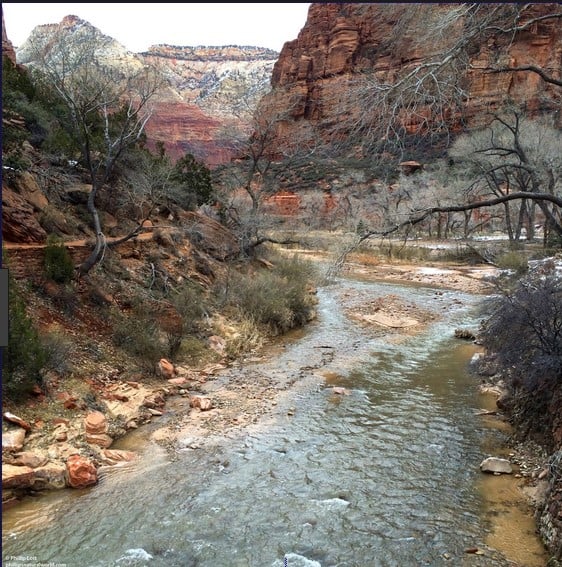Perhaps as early as 150 million years ago during the Jurassic period of geologic time, western North America began to experience “pushing” from the west as the denser Pacific plate began a relentless slide beneath a more buoyant North American plate. Like wrinkles in a rug pushed up on a hardwood floor, the rocks of the Kolob Canyons section of Zion National Park were squeezed, gently folded, and broadly uplifted over a period of nearly 100 million years.
When compressional stress is applied gradually enough, rocks fold in on themselves and can yield like silly putty while not fracturing. But when compressional forces are applied swiftly enough, deformation occurs with the development of brittle thrust faults in which rock layers fracture and are thrust over themselves.
I was able to take a look at some of this structural geology the other day as I drove south from Cedar City UT. In particular, I wanted to see once again where the Moenave Formation was shoved over itself as part of the Taylor Creek Thrust Zone. The Springdale Sandstone member of the Moenave is the prominent cliff-forming rock layer, while the Dinosaur Canyon member forms the bleached white layer beneath it.
During tectonic compression, the Kannara Fold was formed as a major crustal wrinkle in what would one day become the northwest corner of Zion National Park in southwestern Utah. As the wrinkle became more intensely folded over time, brittle fractures developed on the eastern flank of the fold, allowing the rock to be thrust over on itself.
The rocks I came to look at are on the east flank of the fold. The upper part of the thrusted block has moved the Springdale Sandstone from the east toward the west over itself.
It was suggested to me that while I was in Kolob Canyons I should also take a look at the Albino Dino, the bleached white Dinosaur Canyon member found below the Springdale Sandstone. “You can see a drag fold in the road cut!”
I’ll be the first to admit I had to stand there for a while, pondering a sense of movement in the rocks. I considered the thrust faulting in the Springdale Sandstone I had been looking at, and its location just above the Dinosaur Canyon member, and realized these rocks were related to that thrusting.






